Aquatic Invertebrates
Media
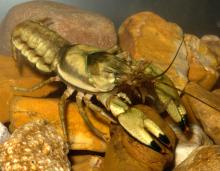
Species Types
Scientific Name
Faxonius neglectus (formerly Orconectes neglectus)
Description
The ringed crayfish is olive green to reddish tan and usually has black or brown rings around the pincer tips. In Missouri it is found in clear, rocky Ozark streams in the southwestern quarter.
Media
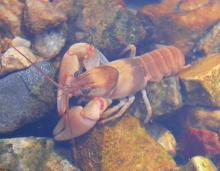
Species Types
Scientific Name
Faxonius luteus (formerly Orconectes luteus)
Description
The golden crayfish varies in color from olive green to golden yellow. Many body parts are trimmed with red. A dark band crosses the head just in front of the cervical groove, and another crosses the carapace at its junction with the abdomen. It's a wide-ranging species.
Media
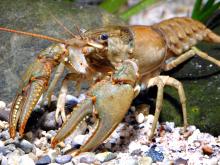
Species Types
Scientific Name
Faxonius virilis (formerly Oronectes virilis)
Description
The virile crayfish is large, reddish brown or green, and lacks prominent markings. The pincers are green with orange tips and are studded with whitish knobs. Paired dark blotches run along the abdomen. This species is widespread.
Media
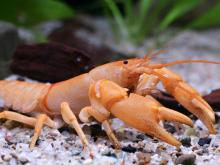
Species Types
Scientific Name
Cambarus hubbsi
Description
Hubbs' crayfish is powerfully built, olive tan or reddish brown, with a narrow blackish band where the carapace and abdomen join. It has a limited range within the Ozarks of southern Missouri and northern Arkansas.
Media
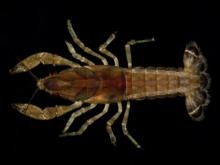
Species Types
Scientific Name
Faxonella clypeata
Description
The shield crayfish is small and tan, with a pattern of paired blackish dashes along the surface of the carapace and abdomen. The pincers are narrow, with short, abruptly tapering fingers. In Missouri it occurs only in our southeast counties.
Media
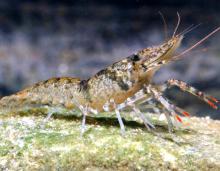
Species Types
Scientific Name
Faxonius lancifer (formerly Orconectes lancifer)
Description
The shrimp crayfish is medium-small, light reddish brown to gray, and thickly dusted with darker specks. Its noselike rostrum is unusually long, with the tip longer than the base, and the pincers are narrow and weak. It is found in the Bootheel.
Media
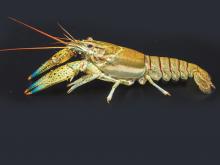
Species Types
Scientific Name
Faxonius nais (formerly Orconectes nais)
Description
The water nymph crayfish is normally found in streams but can also be found in a variety of other aquatic habitats. It is greenish brown or brown with no prominent markings. Its known distribution in Missouri is spotty.
Media

Species Types
Scientific Name
Venustaconcha ellipsiformis and V. pleasii
Description
These small mussels use darters, a type of fish, as hosts for their young.
Media
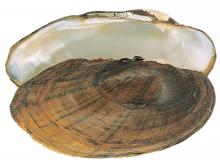
Species Types
Scientific Name
Lampsilis siliquoidea
Description
The fatmucket was a favorite species harvested for the button industry in the early 1900s.
Media
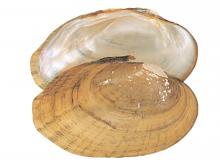
Species Types
Scientific Name
Lampsilis reeveiana
Description
The Arkansas brokenray only occurs in streams that flow south off of the Salem and Springfield plateaus, so it is found only in about the southern quarter of Missouri.
See Also
About Aquatic Invertebrates in Missouri
Missouri's streams, lakes, and other aquatic habitats hold thousands of kinds of invertebrates — worms, freshwater mussels, snails, crayfish, insects, and other animals without backbones. These creatures are vital links in the aquatic food chain, and their presence and numbers tell us a lot about water quality.





















